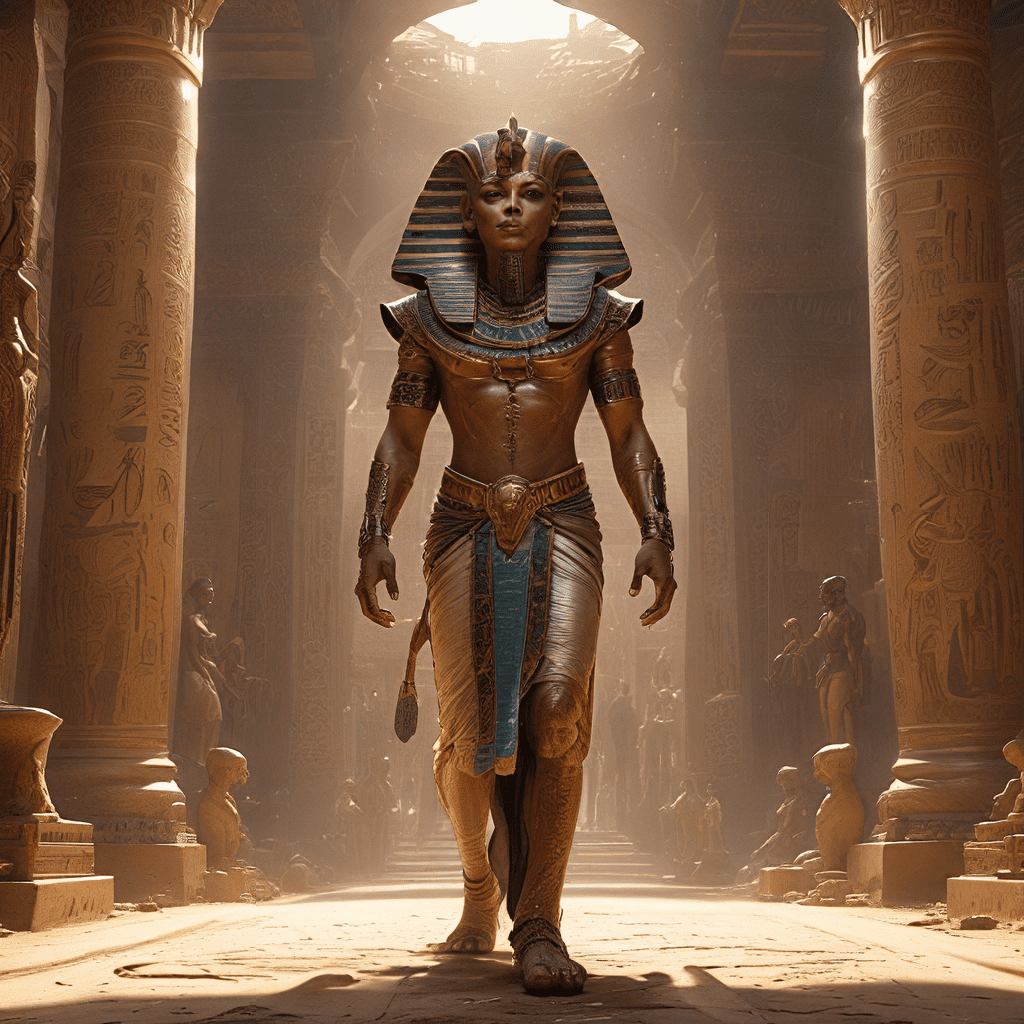The Egyptian Afterlife: A Journey Beyond the Veil
1. Introduction: The Eternal Cycle of Life and Death
In ancient Egypt, life wasn’t seen as a one-time event. It was just one part of a much larger cycle that included death and rebirth. The afterlife was a crucial part of their belief system, just as important as the life they lived on Earth. The Egyptians were obsessed with the concept of Ma’at, which meant “truth,” “justice,” and “cosmic order.” They believed that Ma’at governed every aspect of the universe, including the afterlife. To enter the afterlife, a person had to be found worthy, living a life in accordance with Ma’at’s principles.
2. The Journey Begins: Death and the Soul
The Egyptians believed that the soul was made up of two parts: the Ka and the Ba. The Ka was a person’s life force, and it stayed connected to the body. The Ba was the personality and spirit, and it could leave the body to travel to the afterlife. When a person died, they had to go through a very specific ritual called the “Opening of the Mouth” ceremony. The ceremony was meant to symbolically open the deceased person’s senses so they could eat, drink, and breathe in the afterlife. One of the most important things for a successful afterlife was the Book of the Dead. This was a collection of spells and rituals intended to guide a person through the afterlife.
3. The Weighing of the Heart: Judgment and Justice
After the “Opening of the Mouth” ceremony, the deceased soul began its journey to the afterlife. They had to go through a trial in the Hall of Truth, where they were judged by the god Osiris. Osiris, the god of the underworld, had the power to determine who would be allowed to enter the afterlife. The deceased person’s heart was weighed on a scale against a feather, representing Ma’at. If the heart was lighter than the feather, it meant they had lived a good life and followed Ma’at. Their soul would be allowed to enter the afterlife. If the heart was heavier, it meant they were corrupt, and their soul would be eaten by the monster Ammit.
4. Navigating the Underworld: The Trials and Tribulations
If the soul passed the judgment, their journey into the underworld, known as Duat, began. The Duat was a dangerous and mysterious place filled with obstacles, monsters, and demons. To navigate this perilous journey, the soul had to rely on amulets, spells, and knowledge of the Book of the Dead. Each challenge in the Duat represented a test of the soul’s worthiness, a reminder of their life’s choices.
5. The Fields of Aaru: Paradise and Eternal Life
For those who successfully passed the trials in Duat, the reward was the Fields of Aaru. This was an idyllic paradise, where there was no pain, suffering, or death. The blessed ones would spend their eternity in joy and harmony, reunited with loved ones. The Fields of Aaru were a place of abundance and beauty, where they could fish, hunt, and enjoy the blessings of eternal life. The sun god Ra, the source of life and light, played a vital role in the afterlife, ensuring the cycle of life continued beyond death.
6. The Divine Mummies: Kings and Queens in the Afterlife
Ancient Egyptian kings and queens were believed to be divine rulers, chosen by the gods themselves. They had a special connection to the gods, and they were expected to rule with wisdom and justice. Their tombs were built with great care and detail, designed to protect and preserve their bodies and souls for eternity. The Egyptians believed that the preservation of the Pharaoh’s soul was crucial for maintaining cosmic order. Their bodies were transformed into divine mummies, a representation of their divine power and connection to the gods.
7. The Role of the Gods: Guardians and Guides
The Egyptian afterlife was heavily influenced by a diverse pantheon of gods. Each god played a unique and important role in the journey. Osiris, the god of the underworld, was the judge of the dead, while Anubis, the god of mummification, guided souls to the afterlife. Horus, the god of the sky, was believed to protect the soul during its journey. Bastet, the cat goddess, was thought to guide the deceased soul into the Field of Reeds, a blissful part of the afterlife. The Egyptians believed that prayers and offerings were essential to honor the gods and ensure their favor in the afterlife.
8. The Influence of the Egyptian Afterlife on Other Cultures
The beliefs and practices of the ancient Egyptians had a profound impact on other cultures around the world. Their sophisticated burial customs, impressive tombs, and the rich symbolism of the afterlife influenced the development of death rituals and beliefs in other civilizations. The fascination with Egyptian mythology and the afterlife continues to this day, inspiring literature, art, and film.
9. The Modern Perception of the Egyptian Afterlife
Today, scholars and the general public continue to be fascinated by the ancient Egyptians and their beliefs about the afterlife. Archeological discoveries and ongoing research provide new insights into their complex world. The mysteries of the Egyptian afterlife continue to capture our imagination, reminding us of the enduring human fascination with life, death, and the unknown.




